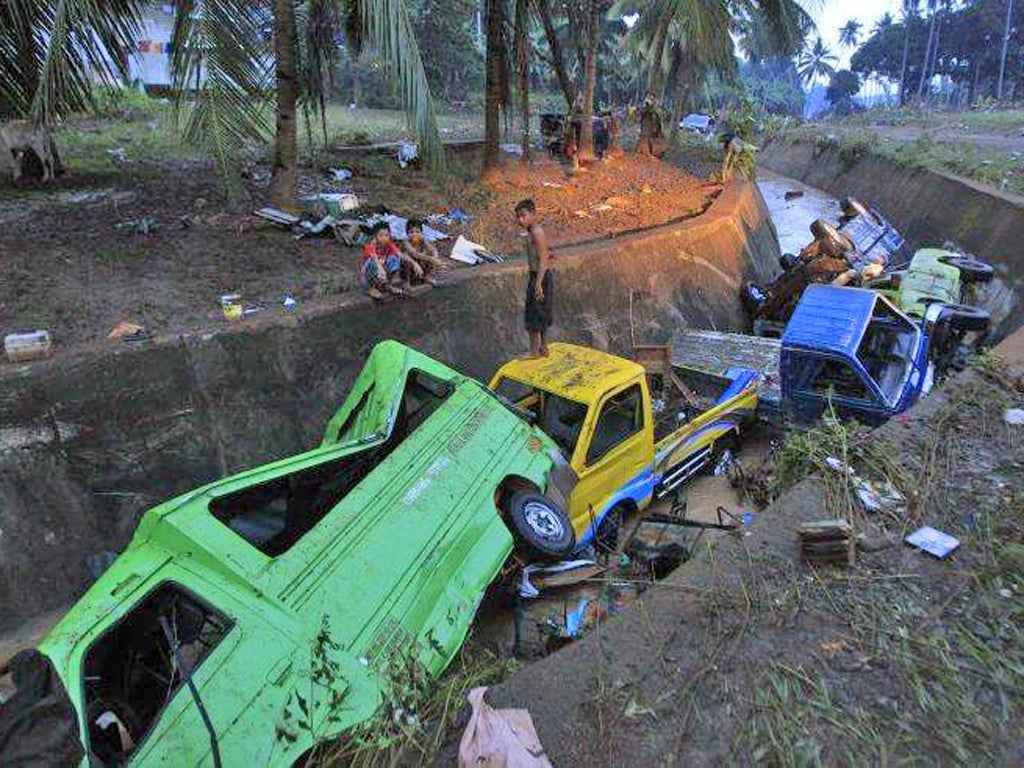Your support helps us to tell the story
From reproductive rights to climate change to Big Tech, The Independent is on the ground when the story is developing. Whether it's investigating the financials of Elon Musk's pro-Trump PAC or producing our latest documentary, 'The A Word', which shines a light on the American women fighting for reproductive rights, we know how important it is to parse out the facts from the messaging.
At such a critical moment in US history, we need reporters on the ground. Your donation allows us to keep sending journalists to speak to both sides of the story.
The Independent is trusted by Americans across the entire political spectrum. And unlike many other quality news outlets, we choose not to lock Americans out of our reporting and analysis with paywalls. We believe quality journalism should be available to everyone, paid for by those who can afford it.
Your support makes all the difference.With funeral companies overwhelmed, a flood-hit Philippine city has organised the first mass burial of some of nearly 700 people killed in one of worst calamities to strike the region in decades.
For the first time in a day, the staggering death toll from Friday night's disaster, spawned by a tropical storm, remained little changed but the number of missing varied widely. Official figures put the missing at 82, while the Philippine Red Cross estimated 800.
The disparity underscores the difficulty in accounting for people who could be buried in the mud and debris littering much of the area or could be alive but lost in crowded evacuation centres or elsewhere.
"We lost count of how many are missing," said Benito Ramos, head of the government's Office of Civil Defence.
In Iligan, a coastal industrial hub of 330,000 people, Mayor Lawrence Cruz announced the mass burials after saying the city's half a dozen funeral homes were full and no longer accepting bodies.
"For public health purposes, we're doing this. The bodies are decomposing and there is no place where we can place them, not in an enclosed building, not in a gymnasium," he said.
He said many of the Iligan dead - 279 by official count - "are just piled and laid outside the morgues," which ran out of formaldehyde for embalming and coffins.
"We're using plastic bags, whatever is available," Cruz said.
In nearby Cagayan de Oro city, the situation was more chaotic and people were resisting mass burials, instead demanding that bodies be interned until relatives could claim them.
About 340 died in Cagayan de Oro, most of them women and children and many of whom lived along river banks. Flood waters came gushing after 12 hours of pounding rain, catching most of them in their sleep.
Residents told local officials that plans for a mass burial was "un-Christian," said Cagayan de Oro city administrator Griscelda Joson.
In a sign of desperation, a funeral home dumped about 30 badly decomposed bodies in a city tip over the weekend, sparking protests from distraught villagers who were looking for their missing loved ones.
About 143,000 people were affected in 13 southern and central provinces, including 45,000 who fled to evacuation centres. About 7,000 houses were swept away, destroyed or damaged.

Join our commenting forum
Join thought-provoking conversations, follow other Independent readers and see their replies
Comments